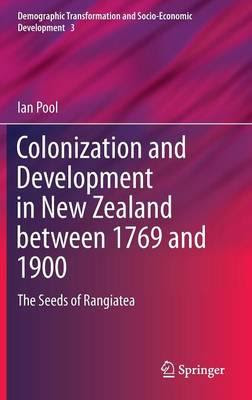On Writing History, Colonization and Development in New Zealand between 1769 and 1900: The Seeds of Rangiatea
By Ian Pool, Emeritus Professor, University of Waikato Vincent O’Malley has generously made space available to me for a guest-blog in his series. I should mention, even before I start, that I owe a lot to Vincent’s patient responses to my questions and other forms of help in writing my book. Marching into the specialised territory of real historians is always a challenge for those of us who are on the fringes of the discipline. In New Zealand this is particularly true, as Aotearoa has a significant corpus of powerful historical research – focused, technical monographs on many topics; elegantly written general narratives in the best humanities’ traditions; and broader annales- type studies. In sum, I owe a large debt to historians. Above all, historians have carefully documented the 19 th century, for example , its prime and momentous events, the key actors and their actions, the constitutional trends, the interactions of Pākehā and Māori (albeit...

